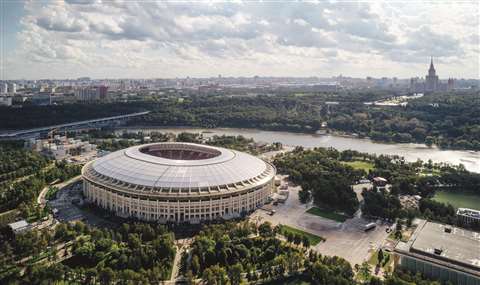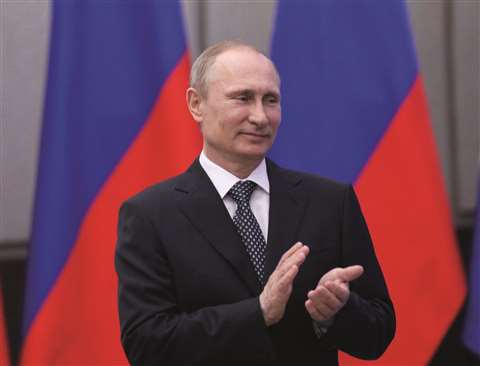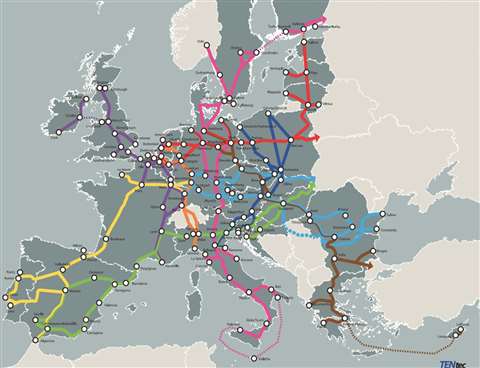CIS nations: regional report
20 March 2019

The Commonwealth of Independent States (CIS) comprises of: Azerbaijan, Armenia, Belarus, Georgia, Kazakhstan, Kyrgyzstan, Moldova, Russia, Tajikistan, Turkmenistan, Ukraine and Uzbekistan. Among these countries – formed when the former Soviet Union dissolved in 1991 – Russia dominates the region. Therefore, a weak Russian economy severely damages the strength of the region as a whole.
Gross Domestic Product (GDP) in 2018 in Russia is estimated to grow 1.8%, with a slight decline to 1.6% predicated for 2019. Data provided by IHS Global Insight reveals that total construction spending in Russia declined by 0.5% in 2017 but is predicted to increase 2.3% in 2018, followed by a modest rise in 2019 of 1.1%.
Real infrastructure construction spending increased 1.2% in 2017, with an expansion of spending of 1.9% predicated in 2018 and 1.3% in 2019. Regarding different infrastructure sectors, spending on transportation showed the largest gains, while the weakest performer was energy construction.
It is also worth noting that hosting the 2018 FIFA World Cup provided a boost for the Russian construction industry, regarding the construction of stadia and infrastructure, which has now passed.
At the start of the year the Lakhta Centre in St Petersburg opened, becoming Europe’s tallest skyscraper at 462m in height. While there may not be plans to construct another building of this height, Russia does have lofty and ambitious infrastructure goals.

In May 2018 Russian President Vladimir Putin, following his re-inauguration for another six-year term in office, authorised the implementation of the 2018 Executive Order on National Goals and Strategic Objectives. Following this, the government developed a 2018-2024 national programme consisting of 12 ‘National Projects’ with 150 development goals.
New goals
This scheme is similar to a previous 2012-2018 Russian plan, although it is worth noting that the new National Projects require significantly larger government investment: US$32 billion was envisaged in 2012, while the 2018 plan proposes US$304 billion.
Analysis from IHS Markit shows that the largest number of projects, equating to almost 20%, are related to infrastructure development, particularly regional road networks, railways and regional airports. Of this the Russian government intends to invest US$140-180 billion in the development of the roads network alone by 2024.
The scale of Russian construction growth rests, to a large degree, on how much of the plan is actually implemented. In 2017, President Putin claimed that 93-94% of all strategic goals listed in the 2012-2018 National Projects programme had been achieved. However, assessments by independent Russian analysts estimate that the average implementation rate was actually 30-40% – a significant difference.
One road project which would be a tick in Putin’s box regarding his grand infrastructure plan is the proposed scheme to build a new highway along the Black Sea between Dzhugba and Sochi, at an estimated cost of US$19 billion.
The planned 210km federal highway, the A-147, is seen as a vital transportation artery connecting the European part of Russia to Sochi, one of the country’s top tourist destinations.

Most of the road currently in use has one lane in each direction, meaning that the trip can typically take up to four hours. A total of 43 bridges and overcrossings and 27 tunnels are planned along the highway. The new four-lane highway will bypass inhabited areas and will be toll-free, according to reports in the Russian media.
Staying in the same geographical area, a RUB40 billion (US$609.8 million) contract for construction in the judicial quarter of St Petersburg, Russia, has been awarded to Yevgeny Prigogine, a Russian billionaire who is reportedly close to Vladimir Putin.
The project involves building residences of the Russian Supreme and Arbitration Courts, according to recent statements of representatives of the businessman.
The new quarter will be located in the historic centre of St Petersburg, on the banks of the Neva river, next to the Spit of Vasilyevsky Island and the Peter & Paul Fortress. The total area will be more than 10ha.
It is expected that Prigogine will attract leading construction companies, both from Russia and abroad, for the building of the quarter. In addition to court buildings, under the terms of the contract, the businessman will, through his Concord Management & Consulting subsidiary, be responsible for the building of a new residential complex.
The plan is for 600 apartments for judges within the quarter, as well as the Palace of Dances, which will be managed by well-known Russian choreographer Boris Eifman. Construction works will start in the second quarter of 2019.

Funding help
Construction activity in the Ukraine was given a boost with the recent news that the European Commission will allocate €4.5 billion (US$5.1 billion) for Ukraine’s integration into the Trans-European Transport Network. The money will be spent on 39 Ukrainian infrastructure projects specified in the Drive Ukraine 2030 strategy – Ukraine’s strategy to build a modern and connected transport system.
The Minister of Infrastructure for Ukraine, Volodymyr Omelyan, said about the strategy, “The document is rather advanced and aims not only at solving the problems of today, but also at creating the new infrastructure reality.
“We can endlessly patch holes on roadways or upgrade cars having been used for 40 years or more. But only ambitious plans and a large infrastructure revolution can give new quality to Ukraine. The construction of a modern state requires an advanced approach.”
According to Omelyan, the strategic goal is for the country’s infrastructure to take a technological step forward. The estimated cost of the whole strategy is US$60 billion – of which 50% will be funded by the Ukrainian government, 10% by the European Commission and the rest by private companies and public-private-partnerships.
In other construction news related to the Ukraine, there are fears that the housing market has become saturated.

A contract has been awarded for construction in the historic centre of St Petersburg, Russia
Sergii Zapototskyi, a representative of EECFA (the Eastern European Construction Forecasting Association) reported that Ukraine used to have an acute housing problem but that, during the past few years, the growth in the volume of housing construction, mainly in large cities and in their suburbs, had made significant adjustments to the market.
“Given the historically high need for housing and a number of existing conditions for growth in this market, there has been significant progress in the development of the housing sector,” he said. However, it now appears that the market is overstocked.
“According to consulting company CDS, in early 2017 housing supply exceeded demand by ten times. Independent expert Jaroslav Tsukanova says that supply exceeds demand by 18 to 20 times,” added Zapototskyi. With residential construction a major component in Ukraine’s recent growth in construction, growth is expected to be negatively affected.






